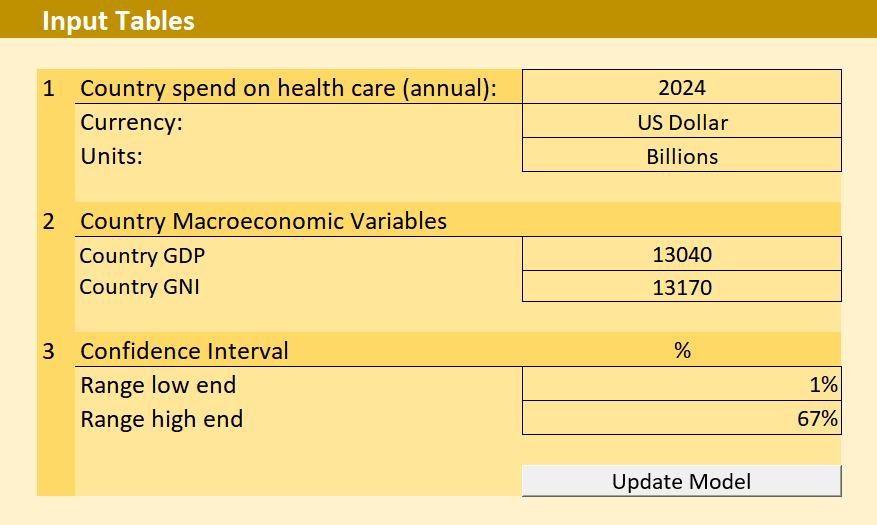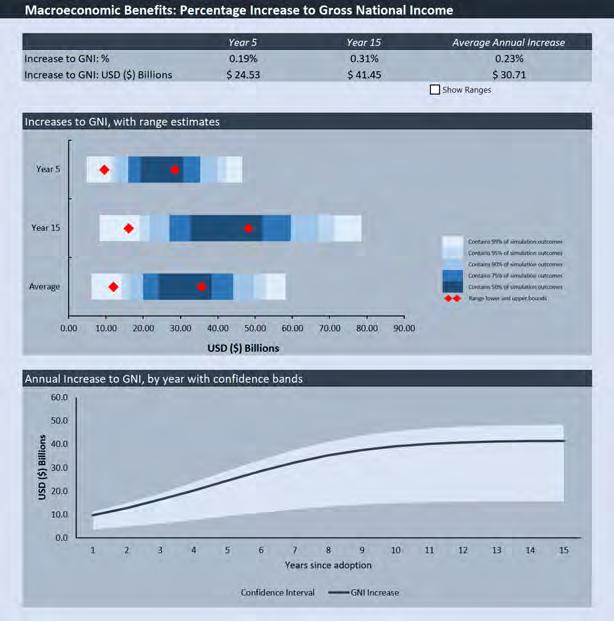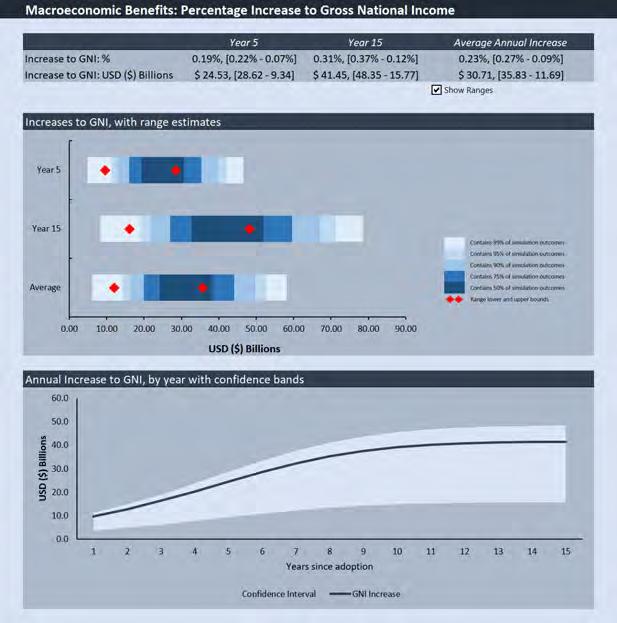
3 minute read
Economic Analysis
> T a b l e o f C o n t e n t s

• In developing an estimate of the SNOMED CT economic benefits consideration was given to the use of an expenditure-based input-output analysis that would show the direct, indirect and induced (multiplier) impacts to GDP 1, employment and income.
• It is recommended that SNOMED International adopt an alternative framework since the expenditure analysis has some significant shortcomings, including: • The analysis cannot consider the alternative uses of a given expenditure and will therefore offer a biased impact assessment. • The Input-Output framework is not generalizable across economies limiting the usefulness of a general model.
• An alternative approach is proposed by forecasting the productivity gains, derived from the deployment and adoption of an SNOMED CTenabled clinical information system and interoperability solution, to the broader economy. The increase to Gross National Income (GNI)2 can then be estimated as a result of the productivity gains including both inpatient and outpatient health care expenditure savings from
Model 1: Select Productivity Benefits Enabled by SNOMED CT.

1. Model 4 Purpose:
• The model estimates the increase in GNI Gross National Income (GNI) per capita as a result of the productivity gains including both inpatient and outpatient health care expenditure savings from Model 1.
• An increase in GNI has been empirically correlated with higher living standards, higher real incomes and the ability to devote more resources to areas like health care, education, research and development and capital investment. These measures in turn are correlated to higher literacy, life expectancy and higher technological innovation.
2. Model 4 Inputs:
• The User inputs the national GDP. • The model directly picks the total productivity gains (savings) estimate calculated by Model 1.

3. Model 4 Calculation Engine:
• The model measures the increase in Multifactor Productivity (MFP)3 from clinical information systems.
• The model assumes that both the inpatient and outpatient health care expenditure savings/avoided from Model 1 can support incremental consumption and/or investment in the general economy4 .
• In order to estimate the increase in GNI, the model measures the increase in MFP for the country’s economy. It achieves this by scaling the growth in MFP by the share of GDP that is made up by the healthcare industry.
• The model leverages OECD data from 23 countries over the time period of 19962019 which shows a positive correlation between the annual increase in MFP and
GNI.
3. Multifactor productivity (MFP), also known as total factor productivity (TFP), is a measure of economic performance that compares the amount of goods and services produced (output) to the amount of combined inputs used to produce those goods and services. Inputs can include labor, capital, energy, materials, and purchased services. 4. This is a common neo-classical framework.

3. Model 4 Calculation Engine con’t:
• The model runs a series of regressions to quantify the impact of increasing MFP, as a result of a productivity gains from a SNOMED-CT enabled, integrated, clinical information systems. The model then selects the coefficient of determination that best addresses the fixed effects5 (e.g. noise like the tech – bubble recession of 2000 and the financial crisis of 2007-2008).
4. Model 4 Output:
• The model provides a range of percentage increase in GNI over the 15-year time horizon.
• The increase to GNI is in the context of all other factors being held constant.
5. Fixed Effects Model - Fixed effects models work to remove omitted variable bias by measuring change within a group. By measuringwithin a group (across time) you control for a number of potential omitted variables unique to the group. Controlling for unobserved heterogeneity when heterogeneity is constant over time and correlated with independent variables. When there are certain non-random characteristics you don’t want ending up in your error term.







